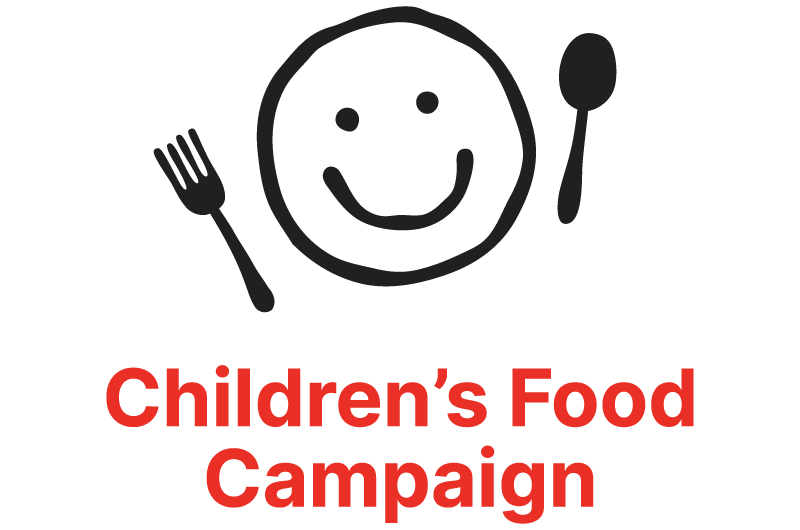Sustain • Children's Food Campaign
Briefing and FAQs
We’re all encouraged to get more exercise and, particularly for children, parks can be a great place to get active, whether it’s playing in the playground or kicking a football about. But activity can be thirsty work, and in many parks today there’s nowhere to get fresh, clean drinking water.
Children often have to go thirsty or visit the nearest ice cream van, shop or takeaway where there may be few healthy options available, and lots of tempting but unhealthy drinks and snacks on offer.
Children’s health
Soft drinks are often high calorie, and regular consumption of soft drinks is linked to childhood obesity and tooth decay. It can also lead to children developing a taste for sweet products. With evidence that children sometimes mistake thirst for hunger, lack of drinking water in parks can lead to children consuming calories they don’t need, and otherwise wouldn’t.
Despite lip service to the contrary, soft drinks manufacturers still market their products to children. Some have reacted to health concerns by developing flavoured waters as an alternative, but it’s far from clear that these are a better choice. Some of these products contain controversial additives such as Acesulfame K and sodium benzoate (E211), and many still contain sugar, often at similar levels to the fizzy drinks they seek to replace.
Drinking for the planet
We’re increasingly being reminded of the importance of drinking plenty of water, and while water is a much healthier option than soft drinks, bottled water is expensive and damages the environment. While a number of government departments and local authorities have switched from bottled water to tap, provision of mains-fed drinking water in public places such as parks remains woefully inadequate.
Drinking water in parks
Historically, many of today’s public parks were set up in the nineteenth century to provide local people with a healthy and green respite from inner city life. Often, providing clean drinking water was seen as a key aspect of this service. Today, people have access to safe drinking water in their homes, so fountains in many parks have been removed or not maintained properly.
A survey of more than 100 parks across the UK found that the current provision of drinking water in parks is, at best, inadequate and often completely lacking. Large parks frequently have too few sources of drinking water, so people have to walk long distances for water.
However, there are signs that some key decision makers are realising the benefits of providing drinking water in parks. For example, in May 2010, a new water fountain was unveiled outside St Paul’s Catherdral by the City of London Corporation, with more planned for the borough in 2011.
Frequently asked questions
The Children’s Food Campaign wants to see drinking water provided in every public park. It would be good for our health, the environment and our pockets, and the idea is popular with children and adults.
However, a few people have expressed worries about the idea, which are addressed here.
Are drinking fountains safe to use?
There is little evidence of hygiene problems arising from people using water fountains. However, it makes sense to locate fountains outside of toilets, rather than inside, where historically they have often been installed. In addition, there are fountain designs where the water has a downward flow which makes it almost impossible for the water to be contaminated.
What about maintenance?
Well designed water fountains should need very little maintenance to ensure that they stay clean and in working order. In most cases, it should be possible for checks to be included in park staff’s regular duties, such as ensuring play areas are safe and that rubbish is collected.
Won’t the fountains be vandalised?
Unfortunately, some public parks suffer from vandalism, and water fountains, like other park furniture, may sometimes be targeted. However, fountain designs are available that are virtually vandal-proof, and if fountains are well sited, taking into account the knowledge of park staff and users, the risk of vandalism can be minimised. Checks incorporated into the regular duties of park staff can ensure that fountains stay clean and in working order.
Won’t it cost too much?
Waterwise, a UK non-governmental organisation, estimates that in most parks, where there is already a water supply (for example, for toilets, a café or irrigation), the cost of installing a new fountain could be as low as a few hundred pounds. Basic fountain equipment can cost less than £200, with more expensive fountains, designed to be resistant to contamination and vandalism, currently costing about £1000. The fountain simply needs to be connected to the existing mains water supply at the cost of some piping and a few hours labour. Only in parks where a mains water supply needs to be installed will the cost be higher. Spreading these costs over the very many years that the fountains will be used makes the annual cost almost negligible. And this doesn’t take into account the benefits to our health and the environment.
Children's Food Campaign: Better food and food teaching for children in schools, and protection of children from junk food marketing are the aims of Sustain's high-profile Children's Food Campaign. We also want clear food labelling that can be understood by everyone, including children.
